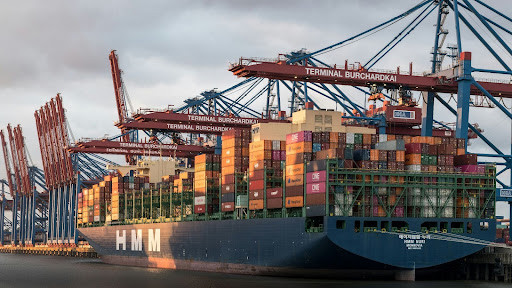Michael Rastiello Discusses Global Supply Chain Disruptions: What Businesses Need to Know

Global supply chains have become increasingly complex and interconnected, making them more susceptible to disruption from both predictable and unforeseen events. According to Michael Rastiello, recent years have highlighted the fragility of these systems, particularly during global crises such as the COVID-19 pandemic, geopolitical conflicts, and environmental disasters.
Businesses across industries are now re-evaluating their supply chain strategies, placing greater emphasis on diversification, agility, and technological integration. Companies that invest in resilience, transparency, and sustainability are more likely to withstand future shocks and maintain customer trust in a volatile global marketplace.
Global Supply Chain Disruptions
Global supply chain disruptions refer to interruptions in the transportation of goods, materials, or components across international trade routes. These disruptions can slow or halt production and delivery timelines, making it difficult for businesses to meet demand and manage costs effectively.
Such interruptions are often caused by unpredictable events like extreme weather, labor strikes, or political instability. The COVID-19 pandemic, factory shutdowns in Asia, and bottlenecks have all contributed to global delays. Even a shortage of shipping containers or a port closure can lead to ripple effects across multiple industries. In some cases, a single delay cascades through the entire production timeline, forcing companies to revise forecasts and shift distribution strategies.
Businesses in sectors such as consumer electronics, automotive manufacturing, and retail have faced repeated challenges due to these disruptions. When just one part of the supply chain breaks down, it can impact the entire production process, underscoring the importance of building more resilient systems. Organizations now see these risks as not only operational but also reputational.
Recent Events Reshaping Global Supply Networks
Several large-scale disruptions have exposed vulnerabilities in global supply chains. The COVID-19 pandemic caused widespread factory closures, shipping delays, and labor shortages, making it difficult for companies to source essential goods. Even as the world began to recover, new challenges emerged, including energy crises, war-related trade restrictions, and inflationary pressures.
Port congestion in major hubs like Los Angeles and Shanghai created months-long backlogs, delaying everything from electronics to clothing. In response, some companies began shifting their sourcing strategies to reduce reliance on any one region, especially in sectors like pharmaceuticals and semiconductors, where delays can have serious implications. These pivots are often supported by data analytics to evaluate risk across global suppliers.
Business Impacts Across Operations
Supply chain disruptions ripple through every layer of business operations. Inventory levels frequently become unpredictable, leading to stockouts or overstocking, both of which are costly. Manufacturers may face halted production lines due to missing components, while retailers risk losing customer loyalty when products aren't available on time.
Transportation costs have surged, driven by fuel price volatility and a shortage of freight capacity. These rising expenses cut into profit margins and force companies to reassess pricing strategies. Long-term planning becomes more difficult when supply chains are unstable.
Businesses must navigate uncertain lead times, fluctuating material costs, and shifting consumer expectations—all while trying to maintain operational efficiency and financial forecasts. These pressures have led some firms to redesign their inventory strategies, favoring resilience over lean models.
Mitigation Strategies for Supply Chain Risks
To reduce vulnerability, companies are rethinking their sourcing models and exploring ways to diversify suppliers across regions. Relying on a single source has proven risky, particularly during crises that affect entire countries or continents. By building a broader supplier base, businesses can better absorb shocks without halting operations. This multi-sourcing method is also helping organizations develop stronger negotiation leverage and supply continuity.
Some firms are also turning to nearshoring, moving production closer to their core markets to shorten lead times and reduce exposure to global shipping delays. Holding strategic inventory reserves, while costly upfront, has helped certain industries maintain continuity when demand suddenly surges or supply is limited.
Strong collaboration with vendors and logistics partners is another key factor. When communication is transparent and expectations are aligned, companies can respond faster to disruptions and maintain a more stable flow of goods.
Leveraging Technology
Digital tools are transforming how companies monitor and manage their supply chains. Advanced tracking systems now offer real-time visibility into shipments, helping teams identify delays and reroute goods before problems escalate. Predictive analytics, powered by historical data, allows businesses to anticipate disruptions and take preventive action.
Automation and AI are also streamlining operations. In warehouses and fulfillment centers, robotics accelerates order processing while minimizing human error. These innovations not only improve efficiency but also add flexibility, especially during periods of labor shortages or sudden spikes in demand. Emerging technologies like blockchain are gaining interest as well, particularly for improving traceability and reducing fraud risks.
Preparing for the Future of Supply Chains
Building a future-ready supply chain means embracing adaptability. Companies are investing in scenario planning and stress testing to understand how their operations would respond to different types of disruptions. This kind of preparation helps uncover weak links before they become costly failures.
Sustainability is becoming an integral part of supply chain strategies. Ethical sourcing, reduced carbon footprints, and circular economy practices are gaining traction, not just for compliance but also for long-term value creation. As customers grow more conscious of where and how products are made, transparency and responsible sourcing can also become competitive advantages.
© Copyright IBTimes 2025. All rights reserved.




















